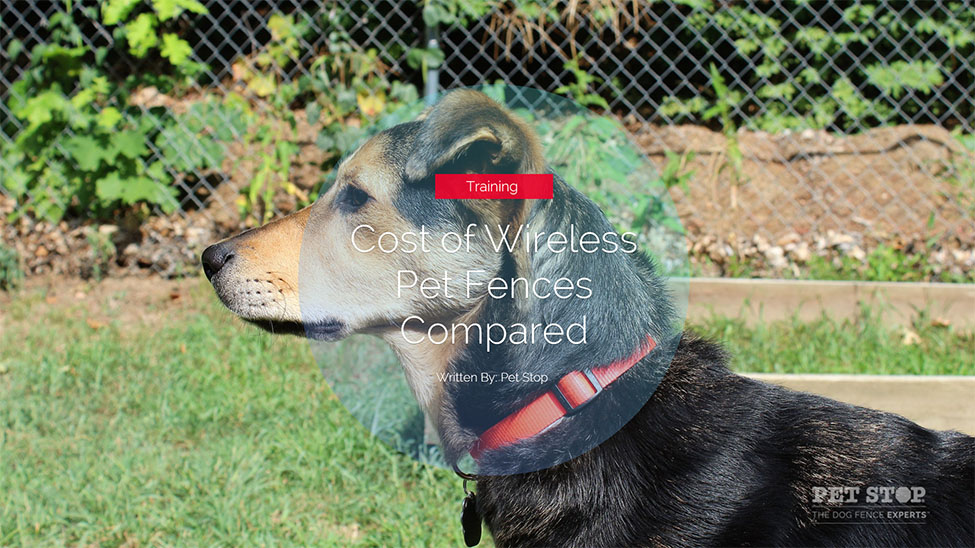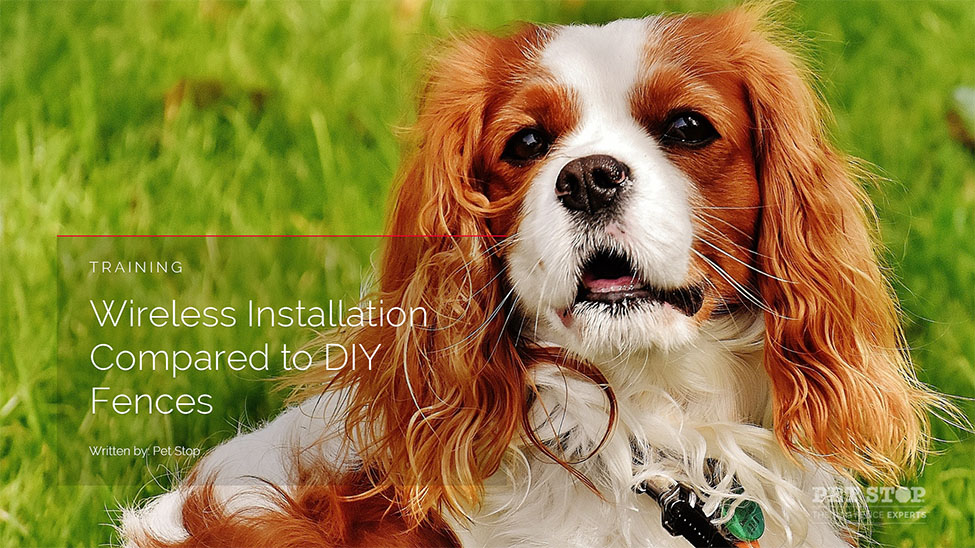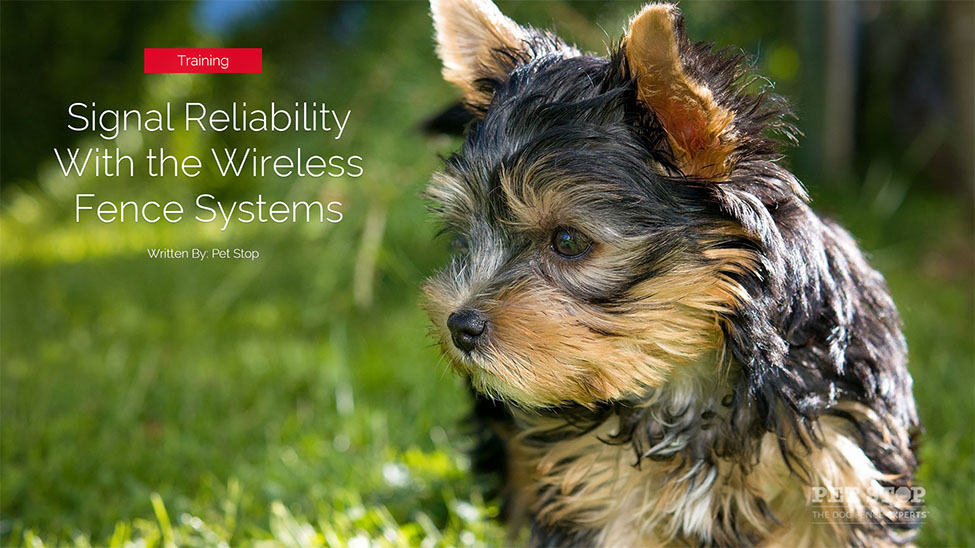Every dog owner has the desire to keep their pet safe and contained within an area they’re familiar with. For you pup, it’s natural to want to follow the nearest scent and be led by their natural instincts. Finding the balance between letting your dog roam without a leash (after they’ve gone through proper training) and setting up wired or wireless fences around the perimeter of your home or designated area should be a priority to ensure the safety of your dog.

In this article we’ll do a comparison between wired and wireless pet fences and touch on all the major points you’ll want to consider before making a buying decision. Both wired and wireless pet fences have their pros and cons, so ultimately, it comes down to what your goals are with a pet fence to make the best choice.
Here are a few factors you’ll want to consider and identify as you get ready to choose a wired or wireless fence system.
- Is this for your home or do you want to use this while traveling?
- Do you live in an averaged size house or do you have a lot of land or property your dog can roam free?
- What is your budget?
- Do you want something quick, easy and portable or are you looking for a more permanent solution?
- Are you concerned about the static shock your dog will receive?
So let’s dive in and compare:

#1 – Cost of Wireless Pet Fences
The first factor we’ll touch on is cost. When it comes to deciding between the two, cost probably isn’t going to be the factor that makes or breaks it. They’re both priced about the same in the $100 – $500 range depending on the quality of brand you buy. If you’re looking for a top tier wireless fence, the one we carry at Pet Stop is without a doubt going to be your best choice.

#2 – Installation
This is a big one. You have to consider the uses for your wired or wireless pet fence. Are you planning on using this for when you’re out on a camping trip or on a vacation with your pet to ensure they don’t stray too far away? Or are you looking for something more permanent to have in your backyard?
When it comes to ease of installation, the wireless fence takes home the gold. To setup and install a wireless fence all you really need to do is either plug it into an electric outlet or install some batteries and you’re up and running.
A wired fence is going to provide more customization in terms of the area or boundary you want your fido to stay in, but it’s also going to take lot more work. A wired fence project typically takes about a weekend for the average DIY’er and you can incur additional cost if you choose to hire a professional to actually come in and bury the wires beneath the ground.
In any case, if you’re looking for the ultimate long term solution, you probably want to have both a wired fence (for your home) and a wireless dog fence you can take with you on-the-go for camping or other trips.

#3 – Containment Area
Containment area is another very important factor you want to consider as it’s the main reason you’re getting a fence in the first place! Most wireless fences can usually contain a dog up to about 250ft diameter of the main transmitters location.
A wired pet fence can go up to 30 acres and be customized in terms of its shape. If you’ve got a huge yard or own land and want to allow your dog to roam and explore the property, then a wired pet fence is definitely going to be a better choice.

#4 Signal Reliability
Most modern pet fences in 2017 are built well enough to minimize wobble and interference in their signal so whether you decide to go with a wired or wireless pet fence, you shouldn’t experience more than a 1-2% margin of error in terms of reliability.

#5 – Maintenance
If you’re looking for minimal maintenance, wireless pet fences are the way to go. Because the unit is small, portable and doesn’t have any major cabling or installation hassles, maintenance can be resolved quickly by taking it in for repair or contacting the manufacturer.
Running hundreds of meters of wired pet fence can be a huge hassle when it comes to maintenance considering the vast amount of cabling and wires that has to be deinstalled or reinstalled around your property.
#6 – Collar
One of the benefits of having a wireless fence is that you can adjust the shock level of the collar. This is great for those who don’t want the static shocks to hurt their dogs or scare them in any way and is different from those other types of collars you mind find on the market. You can just adjust the static shock level to the lowest level to alarm but not hurt your small dog. The collar can also be turned up higher for dogs with really thick or long fur to ensure that they’re able to effectively feel the shock if they do go out of the destined boundary.
Wired fence collars on the other hand deliver the same static shock regardless of the size or breed of the dog. Of course, there are also custom collars available that can be used to accommodate specific types of dog breeds and sizes. Static shocks should also be customized on these collars as well.
So there you have it. If you’re looking for speed, versatility and portability then a wireless pet fence is going to be your best option. If you’re looking for a more permanent solution for your home then you may want to consider a wired dog fence. In addition, if you have a lot of land, or a unique or custom shape that you need your dogs to stay within bounds of then a wired fence may be right for you.
Let us know if the comments below what kind of fence you chose for your dog and why. Also, if we happen to miss anything about our wired and wireless fence comparison, let us know and we’ll update the article to include it.